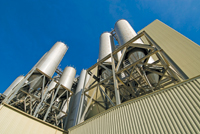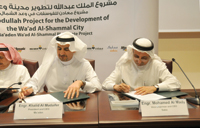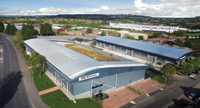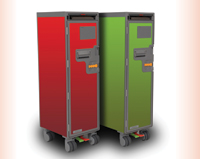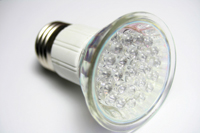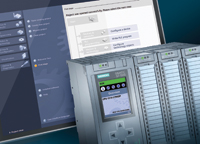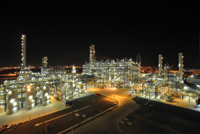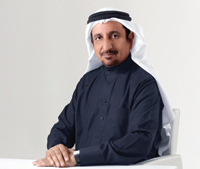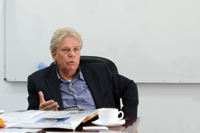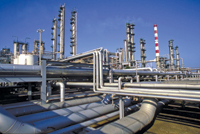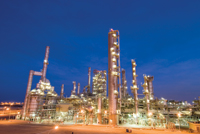
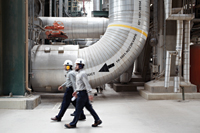 Sabic ... a major player on the world stage
Sabic ... a major player on the world stage
SAUDI Basic Industries Corporation (Sabic), the world’s biggest petrochemicals maker by market value, has firmly set its sights on becoming the preferred world leader in chemicals.
With its new strategy, Sabic 2025, the Saudi-based global giant will become a more global and market-facing company, with its growth driven by differentiated solutions in sectors such as transportation, construction, electronics and packaging, says Sabic chairman Prince Saud Bin Abdullah Bin Thenayan Al-Saud.
“We will build our strength in innovation, creating new materials and possibilities, and finding more efficient processes for bringing them to market. And we will continue to form strong partnerships with like-minded organizations to enhance Sabic’s worldwide strength and reach,” he says.
The company has posted a 2.5 per cent rise in its third-quarter net profit. Its net income grew to SR6.47 billion ($1.73 billion) from SR6.31 billion during the corresponding period last year.
Sabic CEO Mohamed Al Mady says the outlook for next year was improving. “About the future outlook, I think 2014 will be similar to 2013 or slightly better,” he says.
The increase in Sabic’s earnings is attributable to rise in the quantities sold, favourable prices for some of its products and lower financial charges despite other lower incomes.
“The other reasons cited for enhanced income included higher sales volumes and decline in financial charges,” says Al Mady, who is also Sabic vice chairman.
The financial performance of Sabic, especially petrochemicals, metals and fertilisers, is closely tied to the world economy because its products are used extensively in construction, car manufacturing and other major consumer goods. The profits are directly linked to the rise in oil prices, he says, adding that the future outlook in 2014 will be similar to 2013 or slightly better.
As the global economy improves, Al Mady predicts a growth in the petrochemicals demand in Sabic’s main markets such as the US, China and Europe.
 |
Prince Saud ... putting forth a global |
The company’s sales in the third quarter rose by 9 per cent to SR48.8 billion ($13 billion) over the same period in 2012, with sales from the first nine months of this year unchanged from last year at SR140 billion.
“Sabic plans a new Eurobond issue later this year, as the company seeks to take advantage of low interest rates to refinance its total debts of around SR80 billion,” says Mutlaq Al Morished, Sabic’s executive vice president for Corporate Finance.
Sabic has reduced its total debts by around SR15 billion over the past nine months and plans to take on some of the debts now held by its subsidiaries, he says.
Sabic, which employs 40,000 people around the world, relies heavily on natural gas as a raw material for its chemical business, and is facing increased competition from the US where a shale gas boom has made new supplies available.
Sabic printed a $1 billion five-year bond, its first since 2010, attracting commitments from investors worth $5.25 billion.
Enlightening on its research and development activities, he states that it has currently 15 technology and innovation centres in the world and two more will be set up soon in China and India. In China, he says, it will have 300 researchers attached to the facility.
Al Mady says: “Europe faces a new reality. The European chemical industry and various governments need to focus on more resource and cost efficient manufacturing, targeting incentives for innovation at the development stage and instituting a robust regulatory framework based on good science with clear goals. Governments must proactively support this transition — it cannot be done by industry alone.”
Europe’s petrochemical sector must change to deal with the new global reality of greater competition stemming from US shale gas along with other challenges, says Al Mady.
“Governments must proactively support this transition – it cannot be done by industry alone,” he adds.
Sabic is currently working to increase its productivity and efficiency in Europe.
Al Mady says the company wants to bring its plants more up-to-date through efficiency programmes and utilise the best available feedstock it can get.
“We are taking a very close look and evaluating every plant by plant, evaluating our supply chain, our procurement, benchmarking, our cost with the rest of the field, and there are some efficiency programmes that are under implementation… Hopefully we see the results at the end of 2014,” he says.
In April, Sabic announced it will shut down assets in Bergen op Zoom, the Netherlands, and Gelsenkirchen, Germany, which is part of a wider restructuring programme that would result in a 1,050 jobs cut.
“The European petrochemical industry is challenged by factors within and outside. Within is the ageing population, regulations and decreased innovation and science output compared with China and the US.
“From the outside, it’s the shale gas threat that is coming sometime around 2016, where the US export is going to start hitting Europe, especially in the polymers market, as well as methanol and fertilisers,” Al Mady says.
Al Mady hopes that through innovation, Sabic can improve the products offered to customers, which can give the company an edge over competitors and help it survive these challenges.
“Innovation, market leadership – they are dependent on each other.” Al Mady also says he wants Europe to not waste the opportunity of capitalising on its own shale gas resources.
“I hope that Europe can make up its mind to harness the resources of shale gas here. I know the UK is working very hard. They are just about ready to make a decision on investment on shale gas – that would be very helpful to the UK and investors in the UK,” according to Al Mady.
“It would bring more investment, so hopefully, we can have more companies around us.”
In regards to Sabic’s cracker and relatively new, low-density polyethylene (LDPE) plant, in Wilton, UK, Al Mady says that the company is right now looking for ways to improve the site’s performance.
“We are going to look for ways to improve the cracker economics through leveraging some of the best feedstocks we can find and invest in its upgrading,” he says.
The CEO also states that for Europe to be successful in competing on a global level, regulations need to be changed to help the chemical industry progress.
“You cannot have stringent regulations and expect to attract investment,” he says.
In the meantime, Sabic will make a decision on developing a new cracker in the US to take advantage of cheap shale gas feedstock by the end of 2014. “We are studying different opportunities in the US with a few companies and different sites based on shale gas. It takes time of course,” says Al Mady.
Downstream products being looked at include polyolefins, methanol and fertilisers.
 |
Sabic’s Innovative Plastics division |
“But we cannot announce something yet. There is good discussion with people we appreciate working with. I am sure once we are together with our future partners this will be announced. But now it is only at discussion stage,” Al Mady says.
“We should have come up with one or two opportunities in the US by the end of 2014,” he adds. Al Mady says the cracker would be used to serve already established markets in the US and in South America, and would replace product it supplies from Saudi Arabia.
“We are a purely chemical company. We are not integrated upstream and not influenced via upstream. We are at liberty to seek out any feedstock wherever it exists in the world and this a really nice flexibility,” he says.
“That means can invest on a global scale, close to the market, close to our customers and we think the future is going to be adding value to the materials we produce. We cannot stop at commodity – we need to go beyond that to reach end-market solutions for our customers,” he adds.
Sabic manufactures and markets fertilisers, chemicals and metals. The company manufactures a wide range of products including ethylene, propylene, butadiene, monomer, benzene, paraxylene, PVC and polyester, prilled and granular urea and long and flat steel used in a wide range of industries.
Its diversified operations, along with wide global network, provide it a competitive advantage. Decreasing profitability and liquidity ratios and the company’s involvement in litigations remain a major area of concern. However, Sabic’s strategic initiatives and increasing demand for petrochemicals could provide opportunities growth opportunities. Increasing competition may hamper its performance if it fails to maintain product quality and consumer loyalty.
Sabic’s business operations are well diversified across different geographical markets. The company managed to minimise the risks arising out of operating in a specific geographical region by spreading its business across the world. The company’s global network comprises sales offices, storage and distribution facilities.
Sabic markets its products in over 40 countries and operates 60 world-class manufacturing and compounding facilities, with 24 in the Middle East, 11 in Asia, 12 in Europe and 17 in the Americas. Its regional operations help in the coordination of the company’s global activities.
The company is headquartered in Riyadh and its key facilities are in Saudi Arabia. Sabic’s network of offices and companies is spread throughout the Middle East and Africa, which includes the United Arab Emirates, Egypt, Lebanon and Turkey. The company’s offices in Asia are in Indonesia, Singapore, the Philippines, Vietnam, China, Hong Kong, Taiwan, South Korea and Japan.
Its Innovative Plastic division operates across 35 countries worldwide. It operates six technology centers in Riyadh, Bangalore, Baroda, Jubail, Houston, and Geleen, and one for engineering thermoplastics. The wide geographical presence allows the company to serve various growing global markets.
Sabic’s Technology and Innovation (T&I) division works with strategic business units to improve the manufacturing processes and develop new technologies. The company has T&I facilities the world over. Sabic focuses on the development of new patents and certifications. It has a total of 18 Technology & Innovation facilities in Saudi Arabia, the US, the Netherlands, Spain, Japan, China, India and South Korea, backed by more than 8,000 patents.
Sabic, in collaboration with universities, international research centres and other partners from public and private sectors, works together to develop its research capacities to launch new products using advanced technology.
Sabic currently has research relationships with some of the leading universities such as Cambridge University in the UK, the Dalian Institute of Chemical Physics in China, ETH Zurich in Switzerland, the National Research Council in Italy and the Fraunhofer-Gesellschaft in Germany. In Asia, Sabic has three Technology and Innovation facilities.











































































